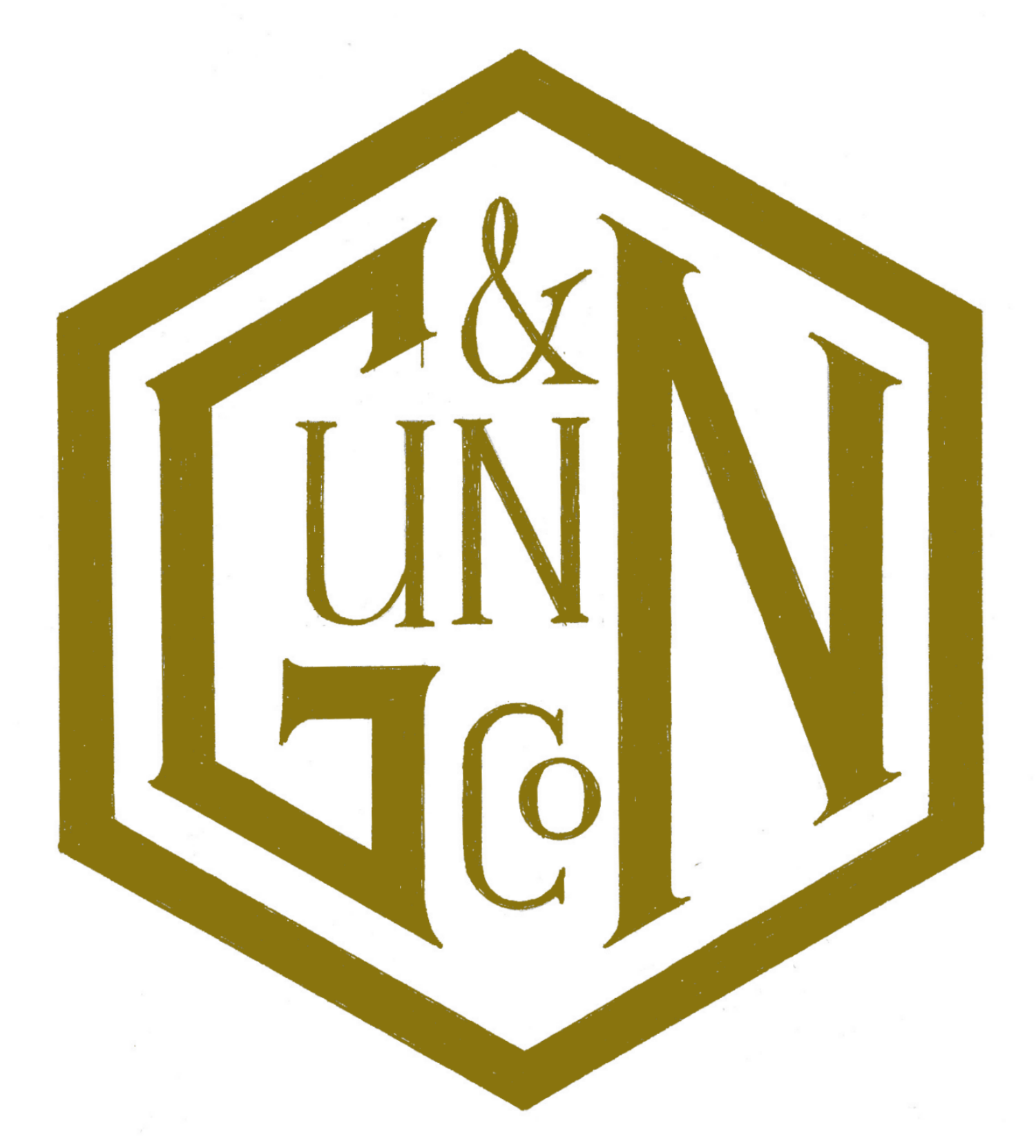
The Repair Shop
Since 2018, I've been the vintage bicycle expert on the BBC's - The Repair Shop. It is a privilege to be part of this amazing group of people. The value in each item that comes into the barn is in the stories they hold and we get to restore them.
Days' go into filming each item for each episode, and I'm often asked to see more of the process. Hopefully this page will go someway to showing more of the 'behind the scenes' process, of each of the items I get to work on.
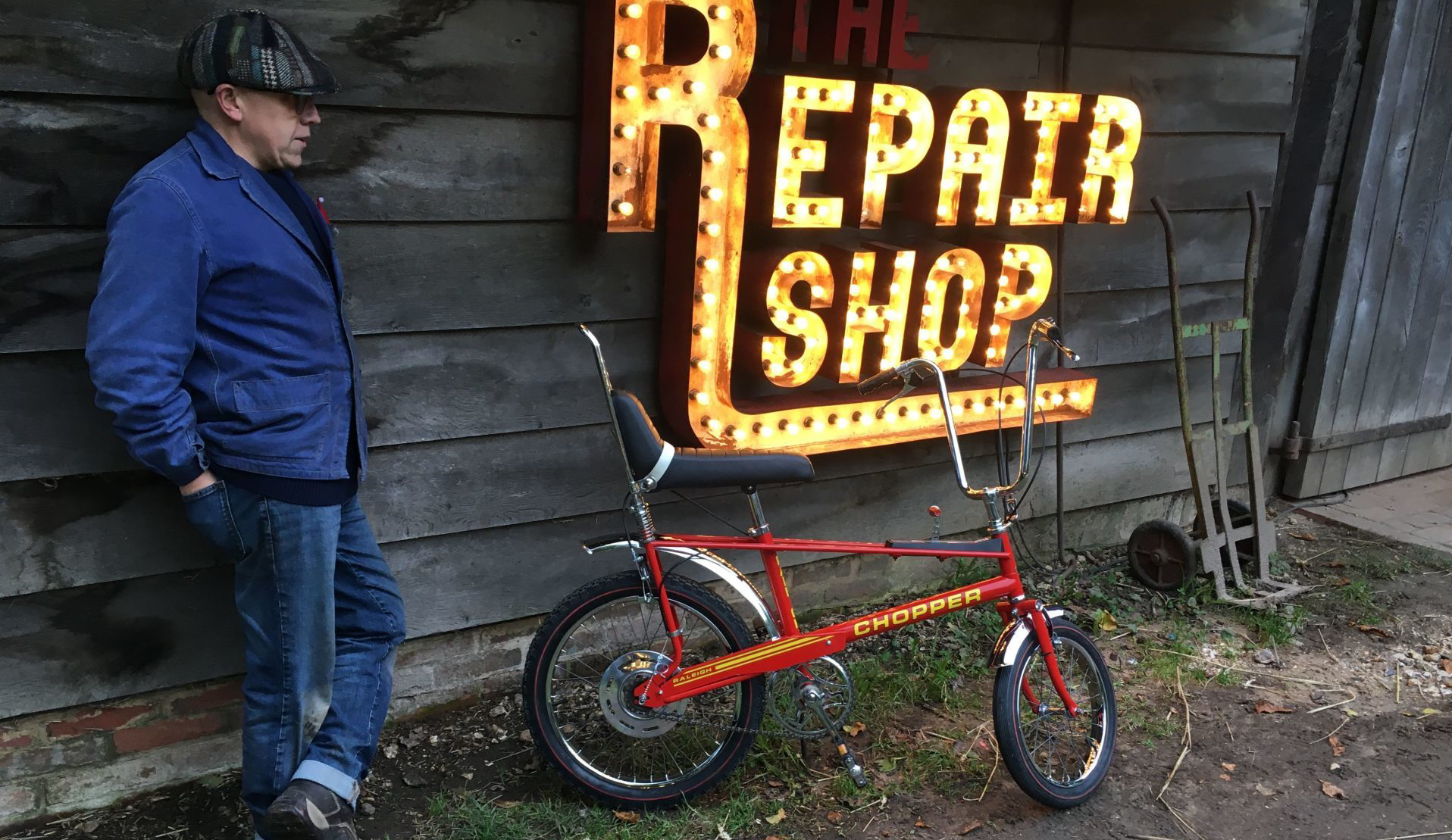
by Tim
•
04 Jan, 2020
The Repair Shop at Christmas - 2019 A rusted, dilapidated Chopper bike made by Raleigh in the 1970's, brought brothers; Glenn and Andrew to the barn. Once one of the most coveted Christmas presents of the 1960s and 70s, this nostalgic blast from the past needed a complete overhaul. Given to them as a Christmas present in December, 1975 after their parents were able to buy it by taking on extra jobs. Yet again, it was very used and in very poor condition. The original chrome plating had all but gone and was very pitted and seemed to be beyond a re-chrome. The saddle had a huge rip, with a piece missing and the front tyre had long gone. Glenn and Andrew thought it had long gone to the tip, but they re-discovered the bicycle in the basement of their mothers home. Me and Dom got to work on dismantling the it and most of the parts came off the frame with ease, but the handlebars proved to be stuck and needed lots of oil and effort to free them. The other part which proved a problem was the sissy chrome bar which goes over the back of the seat. Renowned for being a problem to remove, this was stuck firmly and took about 3 hours to remove with gentle coaxing and oil. We had planned to try and save the original paintwork, but as the chroming was so poor, a decision was made to re-paint the frame and forks to match to the chromed parts which were quickly sent to the platers. Dom set to on the frame and forks with new paint and decals. Once the frame was ready, I then rebuilt the entire bike when the re-chromed parts returned. New tyres and tubes were fitted to the re-built wheels and I managed to save the original spokes. The Iconic gear change lever was also rebuilt along with the brake callipers with new brake blocks and new cables were fitted throughout. The finishing touch was fitting back the original grips to the re-chromed handlebars. The end result was a full restoration; and it was an absolute delight to see Glenn and Andrews' faces when they got to unwrap the bike.
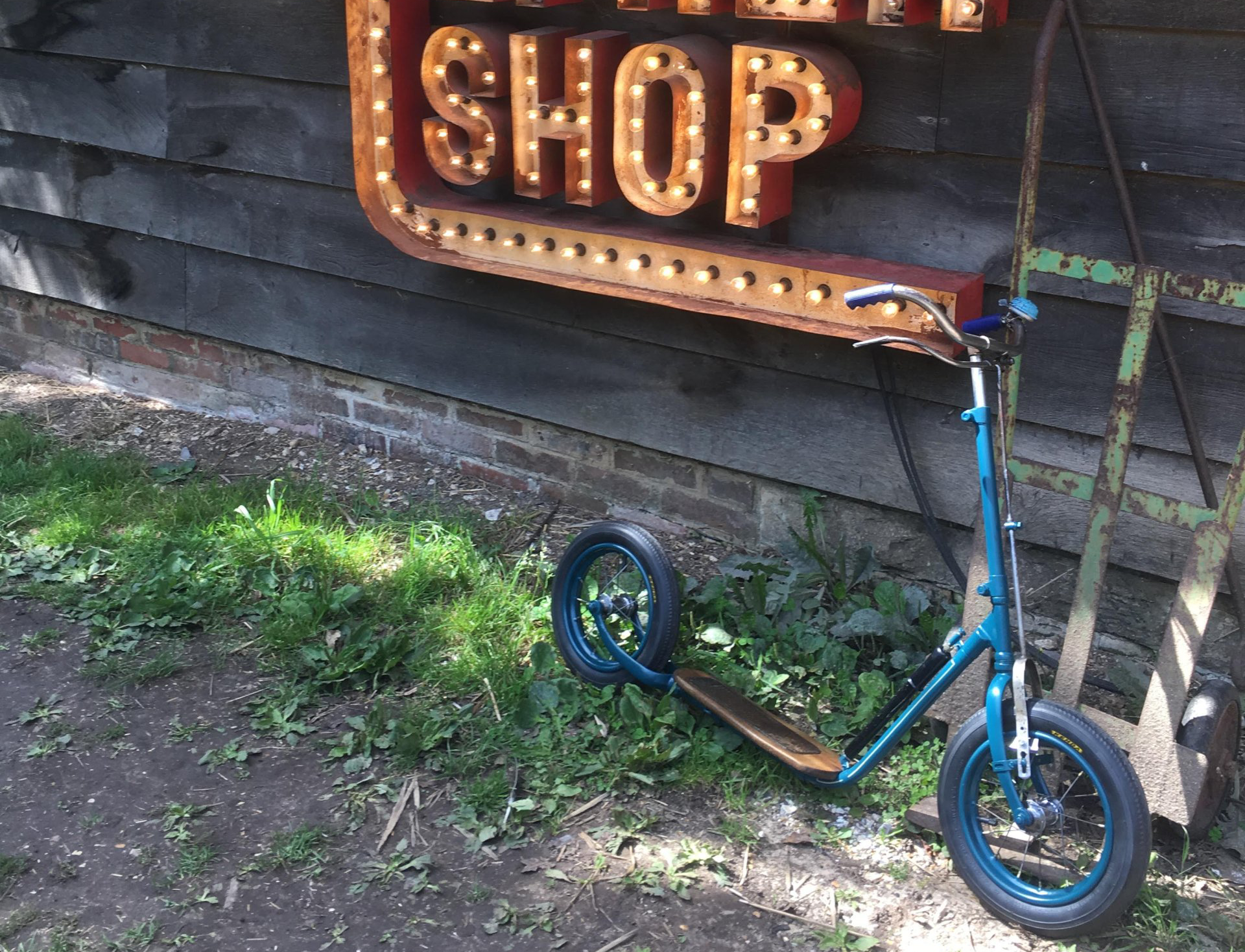
by Tim
•
30 Dec, 2019
Episode 13 - Series 5 Owned by Brian Adams who inherited the rusty scooter from his father. Used by Brian’s father in the 1930s, the scooter was his prized possession and he even held on to it when his family were evacuated during the war. The scooter was then passed down to Brian and his sister, who recall spending many happy hours zooming around on it. Sadly, the scooter sat unused in the shed for many years and like all toys, had been 'painted up' in the past. It really was in a terrible state, but when I first saw it, I could see glimmers of chrome under all that paint. Brian had made reference to it maybe being blue when it was new. So i was thrilled to find patches of original blue and gold lining under the old pump clips. This gave me and Dom (who was to do the painting of the frame and rims) the go-ahead to go with the blue. The original painted parts were stripped to bare metal, I primed them and Dom painted them the original blue.. I cleaned the heavy paint from the chrome parts like the handlebars and brake. The wheels were in dreadful condition and when I removed the spokes, both sets of hub flanges fell away from the centre barrels. These all had to be cleaned, straightened and then both hubs were soft soldered back together and then polished. All the ball bearings and spindles were saved along with all the original spokes and adjusters. Both wheels built really well, but were tricky to true up given their small diameter. New tyres and tubes were sourced and fitted. The wooden foot board had been painted, but I could see the timber underneath was in pretty good order. I actually spent a good half a day cleaning this by hand to remove the old paint, which revealed a worn metal foot plate. The Triang logo was faintly visible, so that nailed my hunch about the maker. The timber had a split in the back which was repaired by Will, the master Repair Shop wood worker. It had split because the board had lost its under spacers in the past to protect it from the frame. When it came to fitting in back, I used washers as the spacers. Once all the parts were cleaned, straightened and preserved, the scooter went back together really well with Dom's blue spray paint and fine gold lining to match what it originally had, when it left the Triang factory back in the 1930's. I found in my stores a period short pump to fit the original pump pegs and I re-built the bell and brake hardware. A fun little restoration and it was wonderful to see Brian's granddaughter 'Freya' scooting it up and down outside the barn.
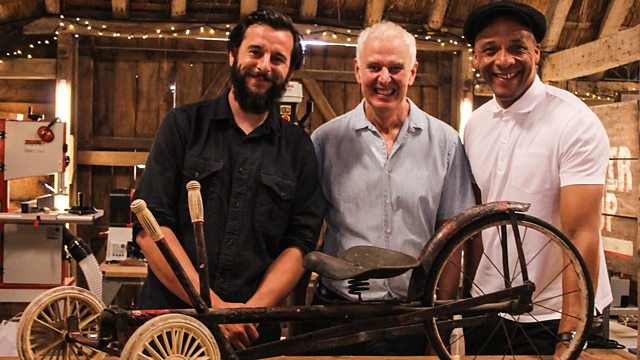
by Tim
•
30 Dec, 2019
Episode 22 - Series 4 Made by iconic toy manufacturer Triang, the go-kart was loved to near-destruction by two generations of children, and owner Mervyn was keen to see it be enjoyed by his grandchildren. Although I was initially down to work on the full restoration, Dom did a fine job of the re-build and managed to save the original paintwork which was hidden under the copious amounts of overpaint. I helped out with re-building the rear wheel and fitting a new solid tyre.
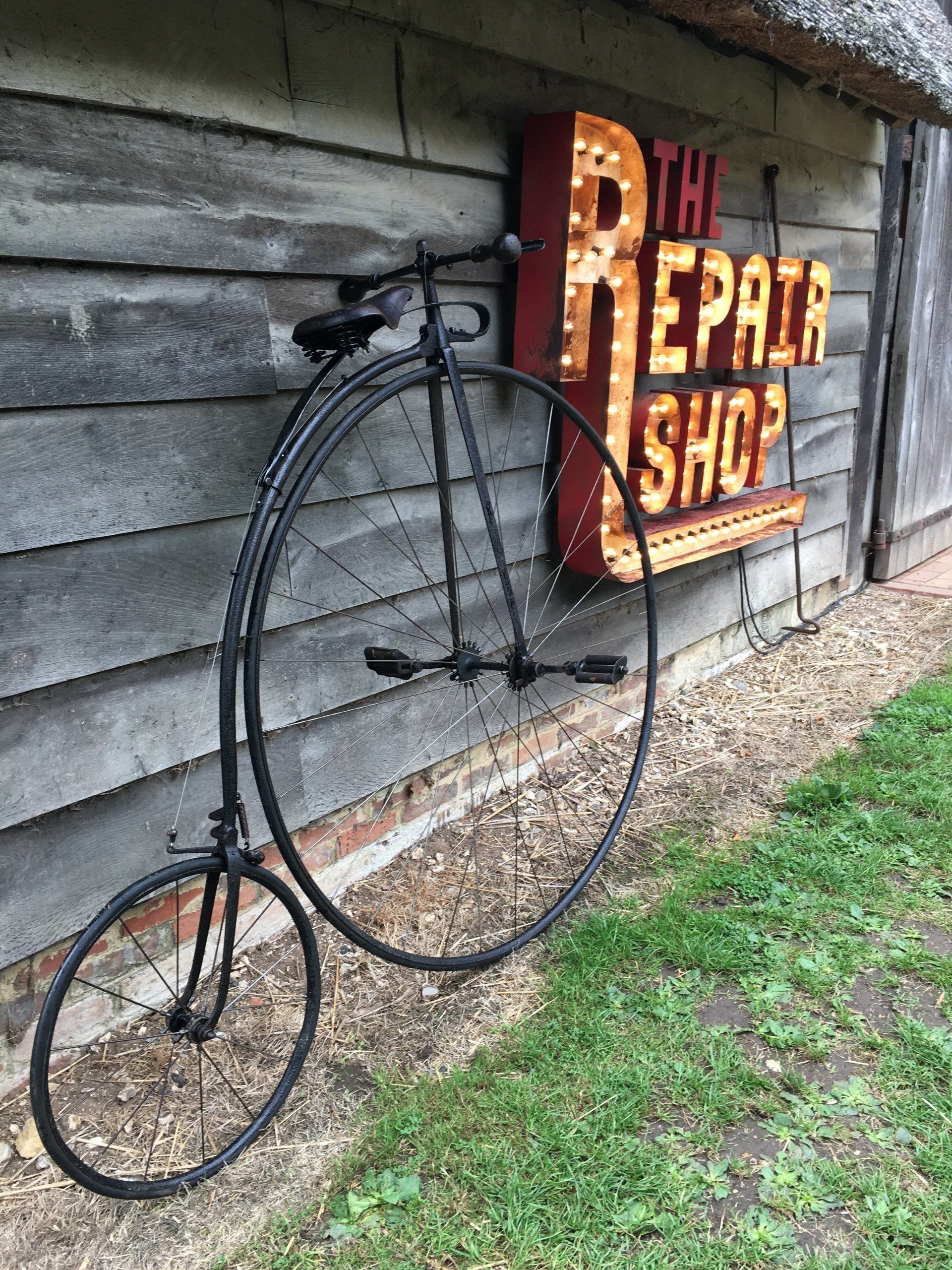
by Tim
•
30 Dec, 2019
Episode 7 - Series 4 My first repair on 'The Repair Shop' was a penny farthing bicycle owned by a gentleman from Cheshire who found and re-built the bicycle back in the 1950's when he was a boy. He submitted it to The Repair Shop for a rebuild. Like many very early bicycles, it had been through several lives and some of them had not been good to it. During filming, both wheels where re-built with new handmade spokes. The original brake hardware was missing and had to fabricate a replica in the style of what would have originally been fitted. But the main part missing was the saddle leaf spring. This was very time consuming to fabricate as it needed to take the weight of the rider, so when I was happy with the design, it was heat treated in the traditional way in the museum forge. The whole repair took 10 days with filming.
